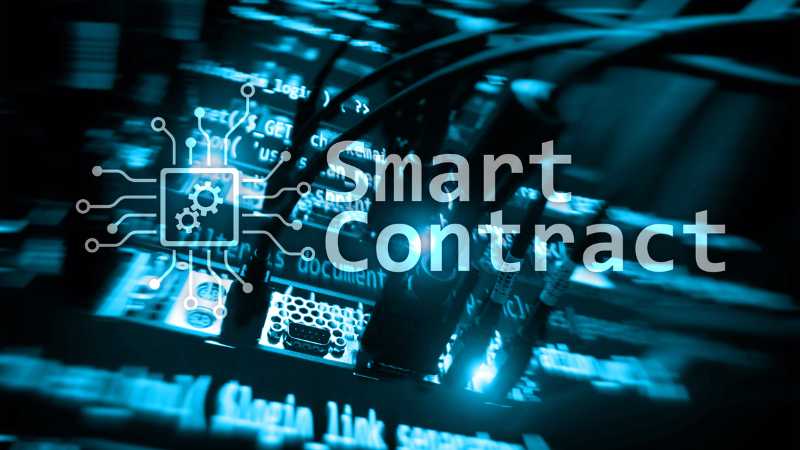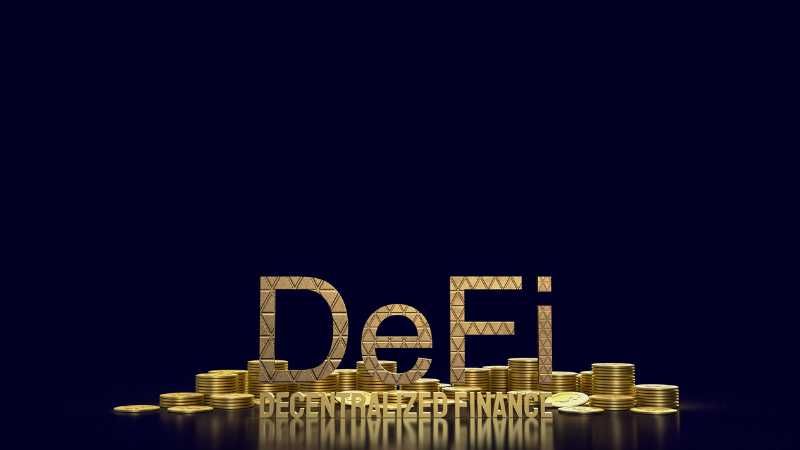Friday Feb 23 2024 07:49

11 min
4. Transforming Decentralised Finance with Smart Contracts and DApps
7.3 How does the Ethereum network facilitate smart contract development?
7.4 What are some examples of blockchain solutions built on Ethereum?
7.5 How are smart contracts and DApps transforming decentralised finance (DeFi)?
7.6 What role does the Ethereum blockchain play in decentralised finance?
7.7 How is the Ethereum network evolving to support the scalability and usability of DApps?
7.8 What industries could benefit from the adoption of DApps on Ethereum?
7.9 What are the advantages and challenges of decentralised applications (DApps) on Ethereum?

In this article, we will explore the revolutionary potential of blockchain technology and its impact on decentralised applications. We will also look into the Ethereum network, which serves as a platform for smart contract development and blockchain solutions.
Blockchain technology has garnered significant attention for its ability to provide transparency, security, and efficiency in various industries.
One of the key pillars of blockchain innovation is the concept of Smart Contracts. These self-executing contracts with predefined rules have the potential to automate and streamline various processes, reducing the need for intermediaries and increasing trust in transactions.
Decentralised Applications, or DApps, are another groundbreaking aspect of blockchain technology.
These applications leverage the decentralised nature of blockchain networks to offer innovative solutions without being controlled by a single entity. This allows for greater transparency, data integrity, and censorship resistance.
Ethereum, one of the most prominent blockchain platforms, plays a vital role in enabling the development and deployment of Smart Contracts and DApps.
Its robust infrastructure and programmable blockchain capabilities provide a fertile ground for developers to bring their ideas to life. Ethereum's native cryptocurrency, Ether (ETH), serves as the fuel that powers the network, enabling transactions and incentivising participants.

In this section, we will explore how Smart Contracts and DApps on the Ethereum blockchain are revolutionising the world of decentralised finance.
Decentralised finance, or DeFi, is a disruptive force that is challenging traditional financial systems by enabling permissionless access to financial services and products.
By leveraging the Ethereum blockchain, DeFi applications are built on a transparent and secure platform that eliminates the need for intermediaries, such as banks and puts control back into the hands of users.
Smart Contracts, self-executing computer programs that automatically trigger actions when predetermined conditions are met, form the backbone of these innovative financial applications.
The benefits of decentralised finance are vast. Through DeFi, individuals can access lending and borrowing platforms, trade assets, earn interest, and participate in liquidity pools, all without relying on traditional financial institutions.
This opens up financial opportunities to a global audience, including the unbanked and underbanked populations.
The Ethereum blockchain serves as a powerful foundation for DeFi, providing a robust and scalable blockchain platform for the development and deployment of these financial applications.
With its wide array of tools and libraries, developers can easily build and experiment with new financial products, fostering innovation and driving the growth of DeFi.
As the demand for decentralised finance continues to grow, so does the need for blockchain development expertise.
Companies are investing in building and optimising blockchain solutions to support the scalability and efficiency of DeFi applications. This presents exciting opportunities for blockchain developers to contribute to the evolution of the financial landscape.
Harnessing the power of Smart Contracts and DApps on the Ethereum blockchain, decentralised finance is reshaping the way we think about traditional financial systems. The potential for further innovation in this space is immense as blockchain technology continues to evolve and drive the transformation of decentralised finance.

In the world of blockchain technology, the Ethereum blockchain stands out as a pioneer, enabling the development of decentralised applications (DApps) that have the potential to transform various industries. As we look ahead, it is clear that the future of applications lies on the Ethereum network.
Decentralised applications, or DApps, offer a host of advantages over traditional centralised applications. They provide users with greater control over their data and eliminate the need for intermediaries, resulting in increased transparency and security.
With the Ethereum blockchain as a foundation, DApps can leverage smart contracts to automate complex processes and transactions, reducing costs and improving efficiency. As the adoption of DApps continues to grow, the Ethereum network is evolving to address scalability and usability challenges.
The integration of layer 2 solutions, such as Ethereum 2.0 and the upcoming Ethereum Improvement Proposal (EIP) 1559, aims to improve transaction speed and reduce fees, making DApps more accessible to users worldwide.
These advancements are crucial in ensuring the widespread adoption of Ethereum-based applications, paving the way for innovation in finance, supply chain, gaming, and more.
The future of applications on the Ethereum blockchain holds immense potential. With ongoing development and improvements, the Ethereum network is poised to become the go-to platform for decentralised applications.
As industries embrace the benefits of blockchain technology, we can expect to see a new wave of innovative DApps that will reshape our digital landscape.
The emergence and growth of Smart Contracts and Decentralised Applications (DApps) on the Ethereum network mark a significant milestone in the blockchain realm.
They are not just reshaping the financial sector through DeFi but also casting a wide net of possibilities across various industries.
With its transparent, secure, and user-empowered approach, Ethereum has proven to be an essential catalyst for innovation and transformation. The network's continuous evolution, including the anticipated Ethereum 2.0 upgrade, promises to enhance scalability, reduce costs, and further democratise access to digital resources.
As we move forward, the potent combination of Ethereum's robust platform and the ingenuity of developers is set to unlock unprecedented opportunities, heralding a future where decentralised applications become as ubiquitous and seamless as traditional ones.
The journey of Ethereum and its ecosystem is a testament to the transformative power of blockchain technology, and the horizon is bright with the potential for a more inclusive and efficient digital world.
Discover the benefits of trading with markets.com.
Smart contracts are self-executing contracts with the terms of the agreement directly written into code. Once the conditions specified in the code are met, the contract automatically executes the agreed-upon actions, removing the need for intermediaries and enhancing security and efficiency.
Decentralised applications, or DApps, are applications that run on a blockchain network, such as Ethereum, instead of a centralised server. DApps leverage the decentralised nature of the blockchain to provide transparency, security, and immutability, offering users greater control over their data and interactions.
The Ethereum network is a blockchain platform that enables the development and execution of smart contracts. It provides a secure and decentralised environment for developers to create and deploy their smart contracts, utilising the Ethereum Virtual Machine (EVM) to execute code across the network.
Ethereum has been utilised to create a wide range of blockchain solutions. Some notable examples include decentralised finance (DeFi) platforms, tokenisation of assets, supply chain management systems, decentralised identity solutions, and decentralised exchanges.
Smart contracts and DApps on Ethereum are revolutionising decentralised finance by providing transparent, efficient, and accessible financial services.
DeFi platforms built on Ethereum enable functions such as lending, borrowing, decentralised exchanges, yield farming, and synthetic assets, giving users greater control over their financial transactions without relying on traditional intermediaries.
The Ethereum blockchain serves as the foundation for many DeFi applications. It enables developers to create smart contracts that power various financial protocols and applications, ensuring transparency, security, and interoperability.
The Ethereum blockchain also supports the use of ERC-20 tokens, which are widely used in DeFi projects.
The Ethereum network is undergoing a major upgrade known as Ethereum 2.0. This upgrade aims to improve scalability by implementing a new consensus mechanism called Proof of Stake (PoS) and sharding.
Additionally, layer 2 solutions such as state channels and side chains are being developed to enhance the scalability and usability of DApps on the Ethereum network.
Various industries can benefit from the adoption of DApps on Ethereum. Some sectors that are already exploring the potential of DApps include finance, supply chain management, healthcare, energy, gaming, real estate, and governance.
DApps can bring transparency, efficiency, and new business models to these industries, enhancing processes and customer experiences.
The advantages of DApps on Ethereum include transparency, immutability, security, and open innovation.
DApps enable direct peer-to-peer interactions, removing the need for intermediaries and enhancing user control over their data.
However, challenges such as scalability, user experience, and regulatory compliance need to be addressed for wider adoption and mainstream integration of DApps.
“When considering “CFDs” for trading and price predictions, remember that trading CFDs involves a significant risk and could result in capital loss. Past performance is not indicative of any future results. This information is provided for informative purposes only and should not be considered investment advice.”